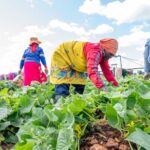
By Francis Mureithi I fmureithi@ke.nationmedia.com
The Nairobi-Nakuru highway has been identified as one of the major hotspots for the thriving bush meat trade in Kenya.
According to a study by scientists at the Wildlife Research Training Institute (WRTI) in Naivasha, hunting for bush meat is also thriving in Kajiado, areas surrounding Amboseli National Park and Tsavo East National Park among others.
“One of the major reasons fueling the sale of bush meat trade is close proximity to major cities like Nairobi and Nakuru which have ready markets for heavy consumption of bush meat,” says Dr Moses Otiende a researcher at the WRTI.
The research paper titled: “Enhancing hotspot mapping of the illegal wild meat trade in Kenya through market surveys and confiscated meat analysis” revealed factors influencing bush meat marketing trends. It was presented during the inaugural Wildlife Scientific Conference in Naivasha.
At the same time, Dr Otiende revealed that the study indicated that the giraffe is one of the highly targeted species and this could be because of its size and other cultural demands.
The Ministry of Tourism and Wildlife indicates that Kenya is home to three giraffe species – Maasai giraffe, Nubian giraffe, and reticulated giraffe.
The National Wildlife Census of 2021 found that Kenya had an estimated population of 34,240 giraffes, of which Maasai, Nubian, and reticulated giraffe consisted of 13,530 animals, 970 animals, and 19,740 animals respectively.
Most giraffe populations live on community or private land. They face a myriad of challenges including recurrence of drought due to effects of climate change leading to death, habitat loss and land fragmentation, and poaching for commercial and subsistence purposes, among others.
Other wildlife targeted by poachers are hippos, antelopes, dik-dik, buffaloes, impala, wildebeests, zebra, gazelle and birds.

“Our data also found that the market surveys alone cannot really underestimate the presence of wildlife products and possible biodiversity loss that is a big threat to wildlife survival in both national parks and private conservancies,” said Dr Otiende.
He observed that bush meat consumption increased during COVID-19, but scientists are particularly concerned that even after the pandemic subsidised bush meat trade is still rampant.
Data from Kenya Wildlife Services (KWS) indicates that between January and May 2020, Kenya confiscated 2.8 tonnes of bush meat, compared to 1.8 tonnes between January and May 2019 which was largely sold at Burma Market, one of Nairobi’s biggest meat markets.
“Mounting evidence from our study found that the vast majority of bush meat was sold in major cities. From our analysis, the illegal trade of wildlife products is increasing and becoming a major threat to wildlife populations in Kenya,” added Dr Otiende
According to the WRTI researcher, the database from 2015 to 2021 received samples from across the country that was analysed at the Naivasha-based laboratories.
“The aim of collecting samples from across the country was to help determine the exact location where the bush meat were coming from,” said Dr Otiende.
“We analyzed that data and went out to the market for open collection without targeting anyone. We went to butcheries within conservation areas and collected samples. The areas we focused on were core conservation areas like Amboseli, Laikipia, Samburu, Maasai Mara, Nakuru-Naivasha highway, and Tsavo,” he explained.
At least 38 samples were collected from Amboseli, 59 samples from Maasai Mara, and 42 samples from Nakuru.
“We have so far analysed 200 samples at our laboratories since 2015 to date. There was a spike in bush meat in 2017 and there is a high trend that we are experiencing in the number of samples submitted to us,” added Dr Otiende.










